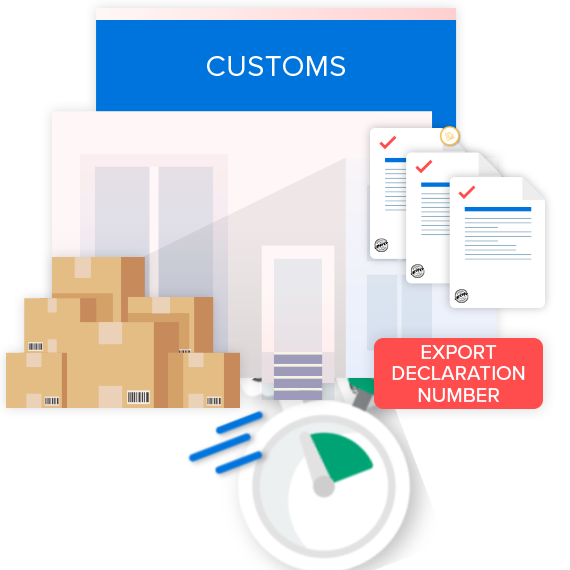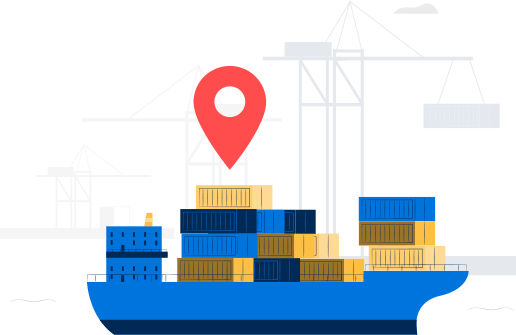
14 Feb
While an export consignment gets ready to leave a country, it is vital to record every minute detail about it. Needless to say, a country’s Customs department is responsible to validate this data. At the same time, the exporters must abide by the importance of sharing all pieces of information accurately. To make this process hassle-free, exporters need to submit a statement known as an export declaration (ED).
For example, in Australia, the exporters must report goods intended for export to the Australian Border Force. For this, they need to fill out what is called an export declaration form which contains all important fields detailing the consignments. The Australian Border Force, on finding the details accurate, validates the data and issues export declaration numbers.
So, what is the export declaration number? In short, it is a unique number that the Australian Border Force issues against an export declaration it receives from an exporter. Every export declaration number (or EDN) is exclusive to one particular consignment and consists of nine alphanumeric characters.
What Is the Importance of ED and an EDN?
Australia’s Customs Act 1901 requires every export consignment cleared appropriately. For this, the Australian Border Force demands exporters to share mandatory information. They share the information so collected with:
- The Australian Bureau of Statistics
- The Australia Taxation Office
So, an important role of export declaration is to ensure adherence of every export activity from Australia with the country’s legislation. Next, issuing of an EDN is an indication that the goods you intend to export meet the Customs regulations and have, therefore, obtained the Customs clearance.
That’s not all! The EDN is an important number, referred to many times throughout the export supply chain. For instance, you may need to quote it in the notifications to release goods from or to return goods to a warehouse. Besides, you may need it to identify individual consignments in one big consolidated consignment. What Are the Ways to Obtain an EDN?
What Are the Ways to Obtain an EDN?
For decades, the exporters have been manually submitting export declarations to the Australian Border Force offices. However, the electronic process of doing it has become popular in recent years. Still, here is a brief overview of each of these procedures:
Manually:
You can lodge an export declaration by personally visiting an Australian Border Force counter in your region. For this, you need to fill out Export Declaration Form B957. Here is a quick overview of various fields in the form:
- Reporting party type (whether you are the owner of the consignment or an agent filling the form on behalf of the exporter). Along with this, you need to fill reporting party ID (that could be Customs Client Identifier or Australian Business Number)
- Intended export date
- Consignee details, including name and city
- Port of loading, the final port of discharge, and final destination country code
- Mode of transport (whether air or sea) along with vessel ID or flight number
- Cargo type (whether containerized, bulk, non-containerized or co-combination)
- Total number of packages and total number of containers. Also, you need to mention gross weight and net quantity
- Invoice currency as well as FOB currency
- Commodity classification – the AHECC (Australian Harmonized Export Commodity Classification) code
- Details of goods, including description, origin code (based on the state of origin) as well as the goods origin country code
- Permit details, if you export prohibited goods or other goods that require permit from concerned authorities. For instance, you must obtain permit from Wine Australia to export wine consignments and wildlife permit from the Department of Environment to export wild animals.
In addition, you may need to fill a supplementary page (B957a), if required. Besides, you need to produce evidence of identity documents.
Electronically:
The Australian Border Force operated Integrated Cargo System (ICS) as an electronic system to accept export declarations. Needless to say, it makes the task simpler, convenient, and less time-consuming for the exporters. All you need to do is buy third-party software to communicate with the ICS and you can easily obtain the EDN without any hassle.
What Else to Know?
Does every good require an EDN?
Usually, a consignment must carry an EDN, if it contains goods that are:
- Having value that exceeds AUD 2000
- In the categories which mandatorily requires permits for their export
- Those goods for which there would be a claim for duty drawback
- Subject to duty and excise with unpaid duty or excise duty
However, there are goods that enjoy exemption from lodging export declaration. These include pets, military goods, etc.
What if an exporter is unsure about certain information?
In such cases, the exporter can lodge an export declaration under the confirming exporter status. For example, if the exact quantity or weight of one or more goods is not known at the time of lodging, the exporter can use this status to amend it later. It must be noted that the declaration submitted manually or electronically should be respectively amended manually and electronically only.
What happens to the EDN if the goods are not exported?
If an exporter fails to export goods within 30 days from the intended export date mentioned in the declaration, he or she must withdraw it within a week after that. Consequently, the EDN stands cancelled. Then, he or she must file a new declaration to export goods on a new date.
Finally, when an ED must be lodged?
The Australian Border Force makes it possible for the exporters to lodge ED up to 6 months before the intended export date. So, you must do it as early as possible to leave room for any amendments.
Undoubtedly, you can take some good steps to successfully obtain an EDN. First, prefer to lodge ED electronically. Second, refer to templates and guides to fill the forms accurately. Third, consult an expert in documentation to avoid mistakes. Also, use good software to store, secure, and access information and also for reporting and auditing.


